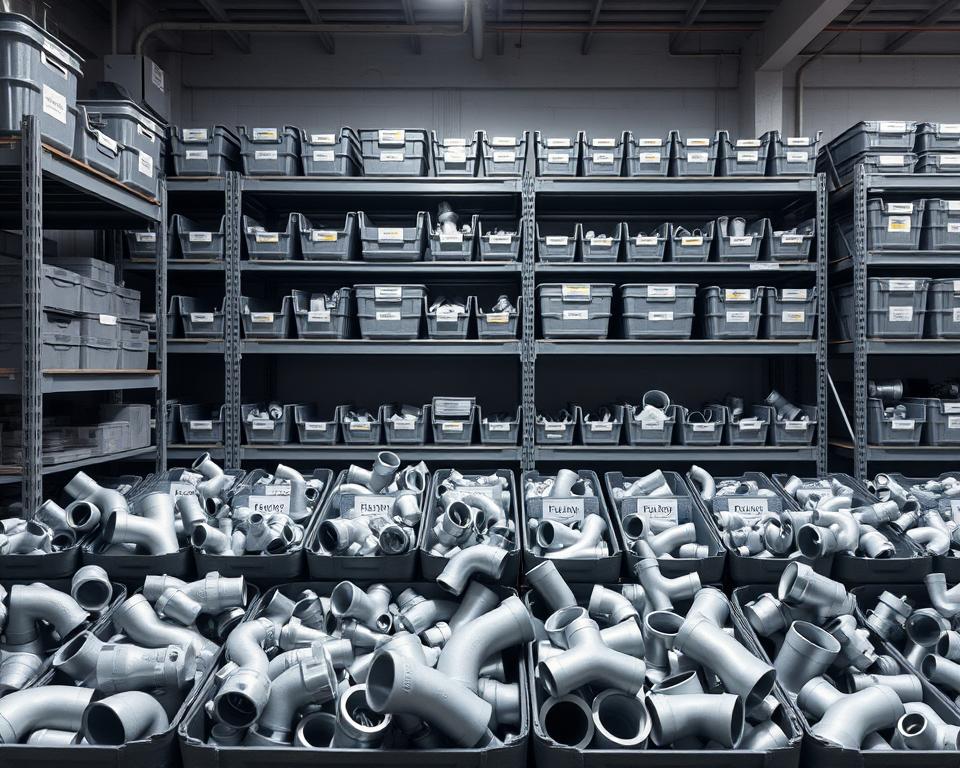Oxide of Chromium Green Refractory Uses Discussed.
Are you aware that approximately 80% of the world’s chromium production goes into making refractory materials? Green chromium oxide, scientifically called Cr2O3, is remarkable for its distinct characteristics. These properties make it essential in applications involving high heat. It enhances resilience and oxidation resistance in numerous industries.
This article will examine the extensive uses of chromium oxide green in refractories. We will highlight its significance in today’s industrial landscape. Let’s uncover why this multi-functional substance is indispensable.
Introduction to Chromium Oxide Green
Chromium oxide green is a vibrant green compound recognized for its versatility and durability. It is key in the sector of refractories due to its unique properties. This substance not only boosting the look of products, but also provides substantial industrial gains for demanding industrial uses.
In the refractory industry, green chromium oxide has a key function. It improves the heat resistance and durability of substances in harsh conditions. This applies to applications in steel manufacturing and glass manufacturing. As industries progress, the material’s role becomes more prominent, providing answers for high-temperature scenarios where reliability is critical.
Chromium oxide green is not only a colorant; it’s a vital component for high-performance industrial applications. Its flexibility and strength turn it into a necessary component in the creation of durable refractory materials.
Understanding Chromium Oxide and its Structure
Green chromium oxide, primarily known Cr2O3, is a chemical formed from chromium element and oxygen. Its chromium oxide composition exhibits distinct properties that boost its use in different industries. This material’s makeup is sturdy and secure, providing endurance in demanding settings.
The heat-resistant traits of green chromium oxide are prominent in applications demanding materials that withstand high temperatures. It demonstrates a resilient ability to withstand heat stress. This makes it suitable for smelting and other industrial processes where temperature is important.
Understanding the details of the structure of chromium oxide helps industries leverage its built-in strengths. Its capacity to resist stress enhances overall effectiveness. This positions green chromium oxide as a preferred option among heat-resistant compounds.
Importance of Chromium Trioxide in Refractories
Trioxide of chromium is vital for the performance of refractories thanks to its distinct features. It improves the reliability and durability of these substances in extreme conditions. This insight is crucial for recognizing its function alongside green chromium oxide in various applications.
Role of Chromium Trioxide in Boosting Stability
Refractory materials must withstand high temperatures without losing integrity. Chromium trioxide improves their heat tolerance and internal strength. This leads to less damage, rendering it key for industries needing reliable substances.
Comparative Analysis of Chromium Oxide and Chromium Trioxide
Chromium oxide and trioxide of chromium have different functions in refractory compounds. Both are key, but differ in their features:
| Feature | Green Chromium Oxide | Chromium Trioxide |
|---|---|---|
| Stability | Consistent thermal tolerance | Enhanced thermal resistance |
| Use | Regularly found in refractory compounds | Optimal for intense thermal scenarios |
| Strength | Moderate durability | Significantly boosts durability |
This analysis shows the specific strengths of green chromium oxide and chromium trioxide to thermal-resistant substances. Their unique traits boost efficiency and durability in different industries.
Heat Tolerance Traits of Green Chromium Oxide
Green chromium oxide displays exceptional traits, rendering it ideal for intense heat environments. Its melting point can soar to extremely high temperatures, ensuring exceptional structural integrity in harsh environments. This is vital for companies needing strength, most notably in metalworking industries.
Heat Tolerance and Strength
Green chromium oxide is renowned for its high-temperature fusion point, vital for preserving the strength of refractory materials. This thermal endurance allows it to endure high heat without breaking down. Its melting resistance turns it into a necessity in applications requiring reliability.
Role in Iron and Steel Production
In steel smelting, chromium oxide green’s high-temperature resistance is vital. It’s often utilized in heat-resistant bricks for smelting ovens and kilns. These blocks face harsh heat and need to maintain integrity. Chromium oxide green’s high melting point ensures they perform well, enhancing performance in metalworking.
Benefits of Green Chromium Oxide in Refractories
Chromium oxide green notably improves refractory materials, important for various industrial uses. It enhances physical traits and resistance to oxidation. These enhancements boost the durability and effectiveness of refractory products.
Enhancing Structural Traits
Including green chromium oxide into heat-resistant compounds notably boosts their physical characteristics. Key benefits are:
- Increased hardness: Green chromium oxide’s toughness boosts the longevity of substances against abrasion.
- Enhanced wear resistance: Its structure reduces damage from heavy usage, extending refractory life.
- Higher flexural strength: This trait allows refractories to withstand external forces, making it ideal for exacting uses.
Oxidation Endurance in Extreme Heat
Green chromium oxide’s oxidation resistance is crucial in heat-intensive applications. The benefits are:
- Extended longevity: Refractories endure more, enduring extreme conditions.
- Enhanced operational efficiency: They experience less material loss, allowing for consistent performance in industries.
- Minimized replacement needs: Less need for substitution of substances cuts costs for sectors using refractories.
These chromium oxide green gains improve the durability of heat-resistant materials and encourage sustainable use. They increase the longevity of materials and lessen material waste.
Chromium Oxide Green Refractory Uses Explained
Chromium oxide green has become crucial in many industries due to its unique characteristics. It is effective in different industries, from iron production to glassmaking. Its role as a vital element in thermal-resistant products shows its value.
Industrial Uses
Green chromium oxide is essential in several sectors for enhanced functionality. Here are the main industries and their particular applications:
- Steel Industry: It’s applied in producing heat-resistant bricks and castables, ensuring thermal stability and resistance to wear.
- Glass Manufacturing: In thermal-resistant linings, it guarantees intense heat and ensures chemical stability.
- Ceramics: As a colorant in glazes, it provides coloration, robustness, and material strength.
- Cement Industry: It boosts the quality of thermal-resistant products for extreme heat settings.
Diverse Uses of Refractories
Chromium oxide green’s flexibility isn’t limited to one field. Its applications include a broad spectrum, such as:
- High-performance refractory bricks
- Castables for extreme conditions
- Heat-resistant furnace linings
- Special ceramics needing thermal properties
This wide range of uses demonstrates chromium oxide green’s importance in enhancing industrial efficiency. Its exceptional features enable companies meet modern production demands, ensuring improved output and extended material life.
Main Industrial Applications of Chromium Oxide Green
Green chromium oxide is essential in various industries, recognized for its multi-use capabilities and effectiveness. It is primarily applied in the sector of refractories, enhancing temperature durability and structural integrity. This material is vital in substances created for challenging settings.
In the manufacture of thermal-resistant components and coatings, green chromium oxide is prominent. These products are vital in high-temperature settings like ovens, smelting chambers, and burning devices. Adding chromium oxide green improves their functionality, promising they maintain integrity and perform consistently.
- Ceramics Production: Green chromium oxide is vital in pottery, enhancing color stability and structural integrity.
- Metalworking: It is used in metal processes for tools and parts needing high thermal resistance.
- Glass Production: In glassworks, chromium oxide green ensures the strength of melting tanks.
This substance is important beyond conventional applications but also in innovative materials. The trend for energy-efficient solutions is encouraging its application in advanced refractory composites.
As companies shift toward performance and efficiency, green chromium oxide remains essential. Its extensive versatility emphasizes its role across multiple fields. This demonstrates its value in the modern refractory industry.
Production Techniques of Chromium Oxide Green
The creation of green chromium oxide uses various recognized procedures, each with unique advantages and issues. These approaches are crucial for producing refined chromium oxide green, necessary for its wide-ranging uses. Processes such as combustion, aqueous processes, and settling are crucial in creation and quality control.
Widely-Used Manufacturing Methods
Many typical production techniques are used in green chromium oxide creation. These comprise:
- Combustion Method: This method consists of the burning of chromium compounds with carbon-based substances. It is productive and has a minimal ecological footprint.
- Aqueous Process: This process employs the interaction of chromium oxides in an aqueous solution under intense pressure and thermal conditions. It produces high-purity products.
- Precipitation Method: This process requires the precipitation of green chromium oxide from water-based suspensions. It allows for control over particle size and shape.
Each technique provides distinct benefits, such as financial benefits and scalability, but also presents challenges like refinement and irregular granule dimensions. Picking the best technique greatly affects the output characteristics and its effectiveness for targeted roles.
Ensuring Quality in Manufacturing
Quality control is crucial in the creation of green chromium oxide. It makes certain the end result complies with regulations for refinement and regularity. Important quality control aspects consist of:
- Frequent evaluation of raw materials to guarantee good-quality components for manufacturing chromium oxide green.
- Monitoring of production parameters, such as temperature and pressure, during the different preparation methods.
- Final product testing for structure and characteristics, making sure it meets standards with target characteristics.
Effective quality control procedures enhance the reliability and performance of green chromium oxide for its multiple uses. This emphasizes the significance of these creation methods in the complete manufacturing system.
Sustainable Methods for Producing Chromium Oxide Green
The movement toward green practices is transforming the production of chromium oxide green. Sustainability concerns is now a major priority as companies pursue strategies to reduce emissions. By incorporating sustainable practices, they cut down on pollutants and reduce resource consumption.
Incorporating green practices into the manufacturing of green chromium oxide meets both legal standards and consumer demands. Companies are now keenly aware of their eco-footprint. By using advanced processes, they gain advantages such as:
- Using waste materials in production, which reduces reliance on raw materials.
- Boosting energy efficiency in the production process.
- Improving waste management to minimize environmental harm.
Environmentally responsible usage of chromium oxide green is also obvious in numerous industries. For instance, it has a vital function in emission reduction systems, reducing toxic output. This shows the vital role of environmental responsibility in the sector of heat-resistant materials.
| Method | Overview | Eco-Friendly Impact |
|---|---|---|
| Resource Efficiency | Using recycled materials for production | Minimizes raw material extraction |
| Energy Efficiency | Techniques to lower energy consumption | Minimizes carbon footprint |
| Emission Reduction | Incorporating pollution control technology | Reduces toxic emissions |
| Waste Management | Recycling and repurposing production waste | Reduces landfill usage |
As industries emphasize green initiatives, the manufacture of green chromium oxide and application stand out. They illustrate how green practices and innovation can combine, setting the stage for a more eco-friendly tomorrow.
Exploring Future Development in Refractory Applications
The landscape of refractory industry is poised for significant transformation, especially with progress in green chromium oxide use. As industries aim for eco-friendly practices, the future development of this material gains importance.
Developing methods are driving innovation in how chromium oxide green is used, such as:
- Improved heat resistance for enhanced functionality in challenging settings.
- Innovative blends that expand its use in metallurgy and ceramics.
- Next-generation production processes to reduce environmental impact while keeping high standards.
The incorporation of green chromium oxide into new heat-resistant materials ensures effective solutions for sectors worldwide. Relentless R&D can utilize this material’s distinct characteristics. This promises it remains crucial in cutting-edge refractory technology.
By capitalizing on these breakthroughs, sectors can enhance the performance and eco-friendliness of their heat-resistant materials. This guarantees a future of green chromium oxide highly successful.
Conclusion
Chromium oxide green is a vital substance that enhances the strength and effectiveness of refractory components across diverse industrial sectors. Its exceptional properties, such as thermal tolerance and oxidation resistance, are important for the steel industry and ceramics industries.
The exploration of chromium oxide green’s applications demonstrates its flexibility and value in today’s production processes. Continued advancements in production expand its possibilities, promising it continues to be essential for demanding roles.
As the movement for greener practices grows, the use of chromium oxide green is likely to expand. Its use in producing eco-friendly refractories highlights its essential part in the future of the refractory market. This guarantees improved performance and productivity in a constantly developing industrial setting.



